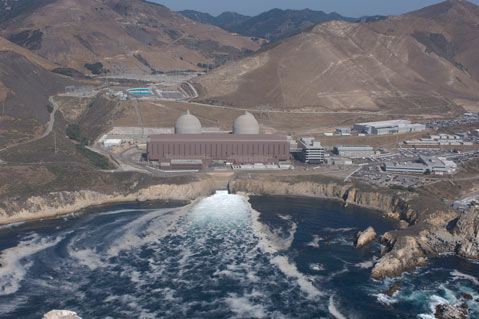Mixed Messages on Diablo Canyon

To mark the fourth anniversary of Japan’s Fukushima nuclear power disaster, PG&E announced it had submitted extensive new documentation ordered by the Nuclear Regulatory Commission (NRC) demonstrating that Diablo Canyon nuclear power plant, located in Avila Beach, can safely withstand any earthquake the surrounding fault lines can throw its way and can absorb tsunamis as well.
In the aftermath of Fukushima, the NRC ordered all nuclear power plant to conduct such studies. The NRC has yet to review PG&E’s documentation, a process that will take considerable time, or render an opinion on its adequacy. Given the discovery of new faults just 300 yards offshore from the plant, such concerns have generated heightened attention. PG&E claims its new studies have not just taken into consideration the new fault lines but also the possibility that some of these fault lines could be connected well below the ocean’s surface.
PG&E’s announcement comes on the heels of a new revelation — issued by Senator Barbara Boxer — that PG&E installed new steam generators in 2008 without determining they could withstand an earthquake along the Hosgri Fault (three miles off the coast) and a loss of cooling water simultaneously. Instead, PG&E studied each disaster event separately. Although this violated the NRC’s own licensing requirements, NRC officials didn’t catch the mistake until it was brought to their attention. This lapse will fuel the long-simmering distrust held by many in the environmental camp toward the federal regulatory agency.
Last month a federal judge in Washington, D.C., rejected efforts by PG&E and the NRC to dismiss a lawsuit filed by Friends of the Earth that Diablo Canyon is operating in violation of its license agreement concerning seismic safety issues. That lawsuit rests on numerous reports filed by the NRC’s resident inspector stationed at Diablo Canyon that there is insufficient evidence that the plant could safely shut down should it be hit by the maximum seismic jolt the newly discovered faults — in conjunction with the better-known ones — could deliver.



